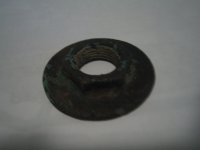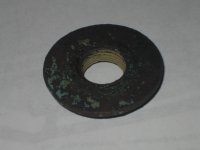My brother and I have made a couple of trips to a new CW site and in addition to the usual bullets and etc we have been digging some artillery frags. They appear to be 3" / 10# confederate parrot and reads. They are side loaded and have a cast iron sabot. The bursting chamber walls appear to be a little thin but substantial for the purpose. The nose section has a square cavity from the bursting chamber to near the tip. There are also lathe dogs at the nose. Now my question. Before we discard this piece as another piece of camp brass is it possible this is part of a fuse adapter. I don't see anything similar in my library but I thought this would be a good place for a final yes/no. BTW it is the same diameter as the nose of the shell and made of a high copper content brass . any help would be appreciated.
regards
regards





